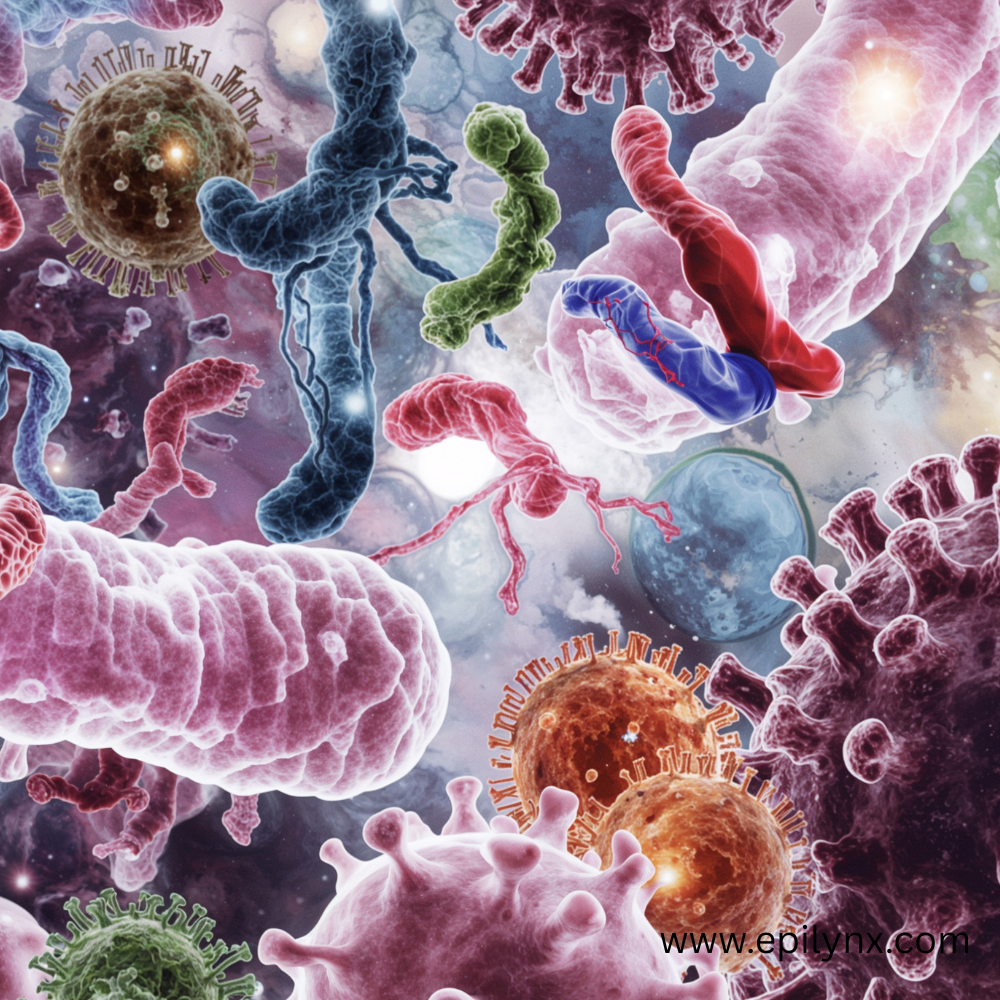
Cold, Heat, and Light: How Temperature and Environment Secretly Reprogram Your Skin (and How to Outsmart It)
Your Skin Has Weather Moods 🌦️
Think of your skin as the world’s most sensitive weather app.
It tracks humidity, heat, cold, UV light, wind — and it changes behavior instantly.
Ever wondered why your face glows in summer but flakes in winter?
Or why your skin breaks out more when it’s humid?
Or why “indoor air” feels like it’s secretly plotting against your hydration?
That’s not just coincidence — it’s your skin adapting in real time to its environment.
Let’s decode how temperature and light literally reprogram your skin’s biology — and how to work with those shifts, not against them.
1. Your Skin Is a Climate Sensor 🧠🌡️
Your skin isn’t just a barrier — it’s a biological thermostat.
It has thermoreceptors, UV sensors, and even light-sensitive proteins that constantly adjust your oil, hydration, and repair levels.
📌 Science fact:
The skin contains the same receptor proteins (TRPV channels) that detect heat and cold in your nerves.
When temperature changes, those channels trigger chemical reactions inside your skin cells — changing how much oil you produce, how fast you shed cells, and even how much melanin you make.
In short: your skin is alive, alert, and meteorologically dramatic.
2. Cold Weather: When Your Barrier Puts on a Coat 🧴🧊
Cold air means low humidity, which means less water in the air — and more moisture escaping from your skin.
📌 What happens:
-
Transepidermal Water Loss (TEWL) increases by up to 25%
-
Oil glands slow down
-
Blood flow to the surface decreases (that’s why you look pale)
-
Barrier lipids solidify, making skin feel tight and rough
💡 Fun fact: In winter, skin’s natural lipid content can drop by up to 50%, even if you moisturize daily.
✅ How to outsmart it:
-
Use thicker, ceramide-based moisturizers
-
Avoid hot showers (they dissolve your lipids)
-
Run a humidifier indoors to keep air moisture around 40–50%
-
Switch to gentle, non-foaming cleansers
-
Layer products while skin is damp — water first, oil or balm second
3. Heat and Humidity: The Great Oil Awakening ☀️💦
Warm weather tells your sebaceous glands it’s time to party.
Oil production increases, pores expand, and your microbiome shifts toward “summer species.”
📌 Science says:
At 86°F (30°C) and high humidity, sebum output increases by 50%, and keratinocyte turnover speeds up — which means clogged pores if you’re not cleansing gently.
💡 Weird but true: In tropical humidity, skin hydration can increase — but barrier function actually decreases, due to constant moisture imbalance and bacterial overgrowth.
✅ How to outsmart it:
-
Switch to lightweight, non-comedogenic moisturizers
-
Double cleanse if wearing SPF or makeup
-
Use oil-balancing actives like niacinamide or zinc
-
Avoid harsh astringents (they’ll just trigger more oil)
4. Indoor Air: The Silent Skin Saboteur 🏠🌬️
Your home or office might be your biggest barrier disruptor.
Air conditioning and central heating suck moisture out of the air.
Constant exposure to recycled air can reduce your skin hydration by 30% in a single workday.
📌 Fun fact:
Office environments have humidity levels similar to airplane cabins (10–20%). That’s desert-dry.
✅ How to outsmart it:
-
Keep a small humidifier near your desk
-
Mist skin lightly with mineral water or a fragrance-free spray mid-day
-
Reapply moisturizer in thin layers rather than thick globs
-
Take “hydration breaks” — drink water and stretch (movement boosts microcirculation)
5. Sunlight: Friend, Foe, and Time Machine ☀️🕶️
We all love sunlight — until we realize it’s secretly editing our DNA.
📌 What UV does:
-
UVA rays (Aging): Penetrate glass, damage collagen
-
UVB rays (Burning): Trigger inflammation and DNA mutation
-
Both increase melanin production (your body’s natural SPF)
-
Free radicals from UV damage oxidize skin lipids — leading to long-term barrier weakness
💡 Hard fact:
Up to 80–90% of visible aging is linked to sun exposure — not time.
✅ How to outsmart it:
-
Use SPF 30+ daily, even indoors
-
Reapply every 2 hours outdoors
-
Choose mineral filters like zinc oxide or titanium dioxide for sensitive, allergen-prone skin
-
Support your skin’s antioxidant defense with vitamin C, green tea, or niacinamide
6. Light Beyond the Sun: Blue and Infrared 🖥️📱
Blue light from screens penetrates deeper than UVB — right into your dermis.
It triggers oxidative stress, pigmentation, and (ironically) disrupts your circadian rhythm.
📌 Science fact:
Two hours of daily screen exposure can increase oxidative stress markers in skin cells by 50%.
Infrared light (heat from laptops, ovens, or heaters) can also cause inflammation and collagen breakdown.
✅ How to outsmart it:
-
Use antioxidant serums during the day (vitamin C, ferulic acid, niacinamide)
-
Turn on “Night Mode” to reduce blue light emission
-
Take regular screen breaks and get natural light — your skin’s clock needs it
7. Environmental Extremes: The Shock Therapy Your Skin Hates 🧊🔥
Sudden temperature swings — like walking from freezing outdoors to overheated indoors — confuse your skin’s thermoregulation.
Capillaries expand and contract rapidly, leading to redness and sensitivity.
📌 Fun fact:
People living in climates with big temperature shifts experience 40% more microcapillary damage (visible redness, “broken” veins).
✅ How to outsmart it:
-
Always apply a protective layer (moisturizer or barrier balm) before facing extreme cold
-
Avoid washing with very hot or cold water
-
Let your skin adjust to indoor temperature gradually before cleansing
8. Pollution: The Invisible Aging Partner 🌆
Urban environments expose your skin to fine particles (PM2.5) that penetrate pores and trigger oxidative stress.
📌 Hard fact:
Pollution exposure accelerates pigmentation and wrinkle formation by 20% compared to clean-air regions.
✅ How to outsmart it:
-
Cleanse every night, even if you didn’t wear makeup
-
Use antioxidants daily
-
Avoid fragranced products — they react with pollutants and can form irritants on skin
9. Seasonal Skincare Shifts: When to Switch It Up 🍂🌸
Your skin doesn’t need a complete routine overhaul every season — but small tweaks make a huge difference.
| Season | Skin Behavior | Smart Adjustments |
|---|---|---|
| Winter | Dry, tight, dull | Thicker moisturizer, humidifier, skip foaming cleansers |
| Spring | Reactive, allergy-prone | Anti-inflammatory ingredients, gentle exfoliation |
| Summer | Oily, congested | Lightweight textures, consistent SPF |
| Autumn | Transitional | Barrier-repair serums, balanced hydration |
10. The Takeaway: Treat Your Skin Like It Lives on Earth 🌍
Your skin doesn’t exist in a vacuum — it reacts to air, light, temperature, and time.
It’s not moody; it’s intelligent.
So instead of chasing “perfect” skin, aim for adaptive skin — strong, responsive, balanced.
💡 Practical checklist:
✅ Use pH-balanced, fragrance-free cleansers
✅ Layer hydration (water + oil)
✅ Protect with SPF and antioxidants
✅ Adjust texture, not ingredients, by season
✅ Support your skin with good sleep, food, and stress management
Your skin isn’t fragile. It’s a living, breathing ecosystem trying to adapt to Earth’s chaos — all it asks is a little cooperation.


